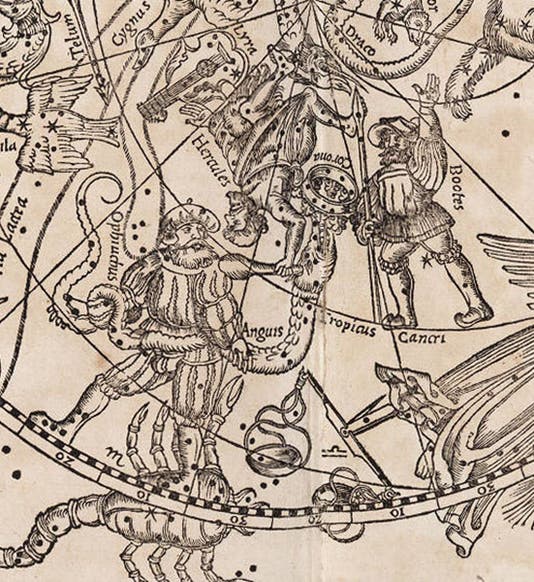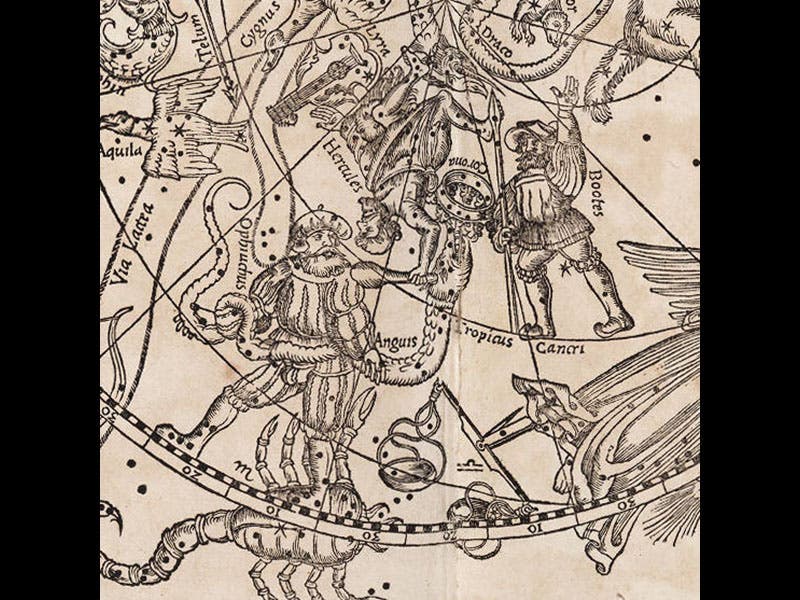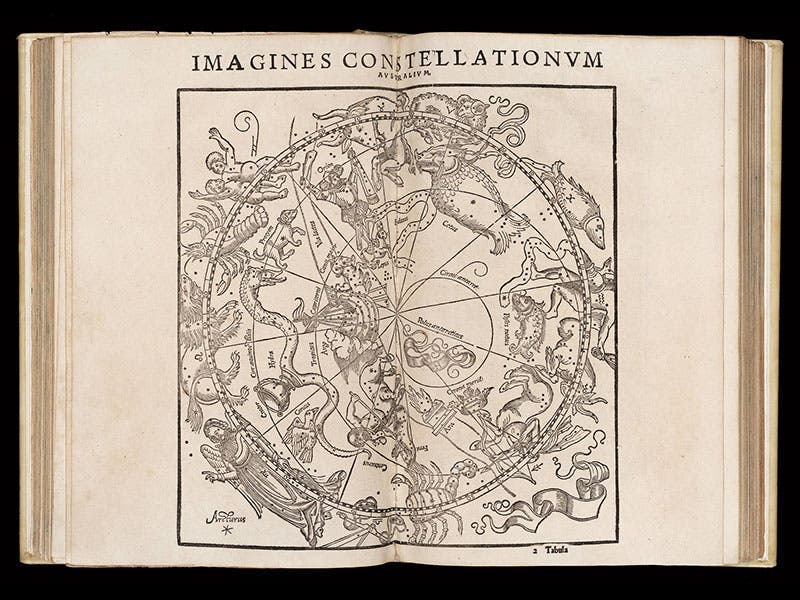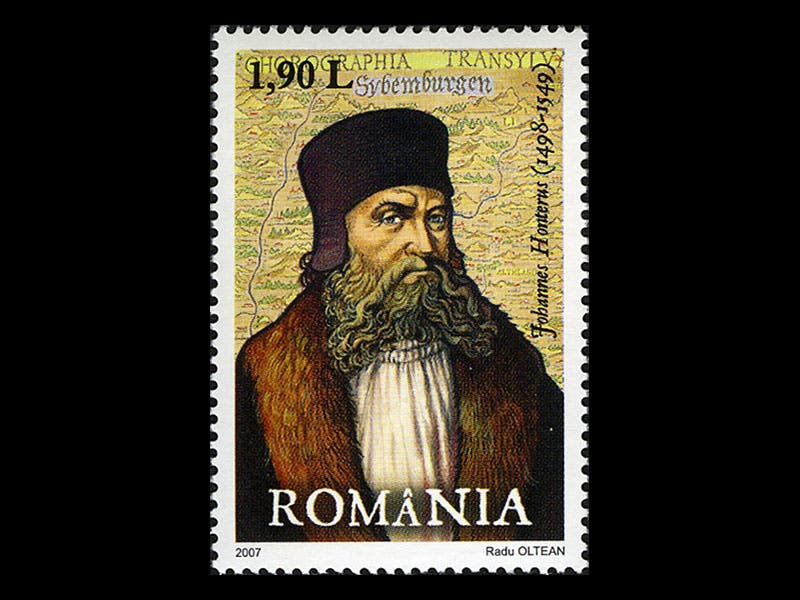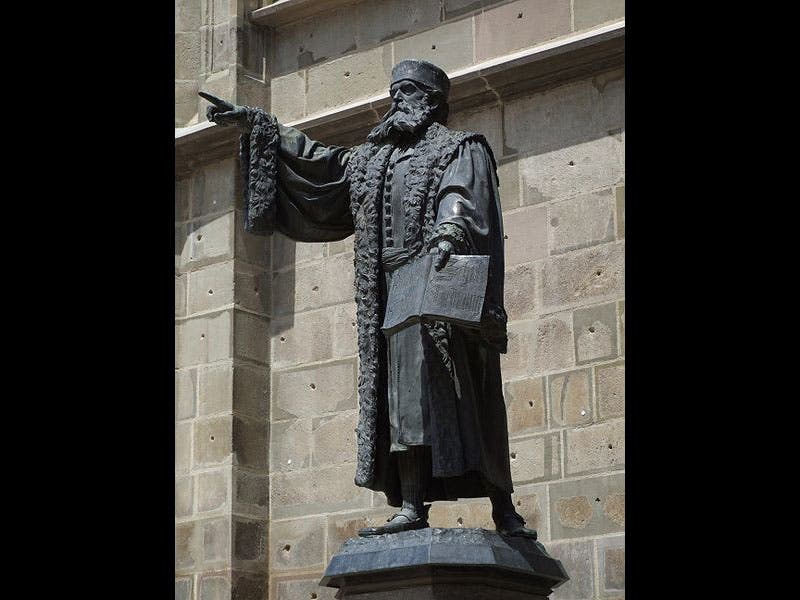Scientist of the Day - Johannes Honter
Johannes Honter, a Transylvanian cartographer and humanist, died Jan. 23, 1549, at the age of about 51. Strictly speaking, Honter was a Transylvanian Saxon, which means he was the descendant of ethnic Germans who moved to Transylvania, then part of Hungary, in the 14th and 15th centuries. In the 1530s, he was living in Basel and learning the craft of woodcutting. He published a Rudimenta Cosmographia in 1530, illustrated with two maps of his own devising, and by 1532, he was skilled enough to draw, cut, and publish two star maps, one showing the northern skies and the other the southern (second and third images). Honter's two maps are clearly patterned after those that Albrecht Dürer published in 1515, with some important differences. For one thing, Honter showed the stars as seen from the earth, i.e., from the inside of the stellar sphere. Dürer had portrayed the stars as if they were on a globe, i.e., from the outside. So that means Dürer's Big Bear faces one way, and Honter's the other, and the two sets of zodiac constellations march around the celestial equator in opposite directions. Second, Honter decided that Dürer's classical nudes would get a decided chill in the Transylvanian air, and so he clothed them in Germanic court dress, and they do look more comfortable (first image).
Honter's planispheres of 1532 were included in the 1541 Omnia quae extant opera (Complete Surviving Works) of the great ancient astronomer, Ptolemy of Alexandria. And this is why we happen to own a set of Honter's star maps, since we have an attractive copy of Ptolemy's Opera. We displayed the book, opened to the star maps, in our 2007 exhibition, Out of This World.
Honter is something of a hero in his home country, which is now Romania. His face appeared on a Romanian postage stamp in 2007 (fourth image), and in his home town of Brasov, a handsome bronze statue of Honter stands outside the Black Church and points, one would hope, at the stars (fifth image).
Dr. William B. Ashworth, Jr., Consultant for the History of Science, Linda Hall Library and Associate Professor, Department of History, University of Missouri-Kansas City. Comments or corrections are welcome; please direct to ashworthw@umkc.edu.

